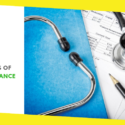Top 10 Strategies for Smart Borrowing

Student loans are unavoidable nowadays. About 90 percent of students that apply for monetary aid graduate with understudy debts. Luckily, there are numerous ways you can spare cash on your educational loans.
Here are 10 things to focus on when you have to pay for school.
-
Contents
ToggleHave a financial plan before you get the loan.
Try not to get more than you can stand to pay back. You must be borrowing less for your education than the estimated beginning pay for your field of study.
-
Keep the focus on free cash first, for example, gifts, grants, and different kinds of monetary aid that doesn’t need to be earned or re-paid.
Apply for monetary aid by documenting the FAFSA consistently. Look for grants with a free grant coordinating administration like StudentScholarshipSearch.com and win scores to participate in grants at ScholarshipPoints.com.
-
Borrow from government first.
Government educational loans are less expensive, more accessible, and have preferable reimbursement terms over private loans. For instance, government educational loans offer salary based reimbursement and the forgiveness of loan, whereas private educational loans don’t.
-
Consider private educational loans only after you have tried different monetary aid programs.
Stipends and grants, which don’t need to be reimbursed, are the best sources to pay for school. Loans ought to be an optional asset, if conceivable.
-
Have a lifestyle of student while you are in school.
Cut school costs by selecting at a lower-cost school, for example, an in-state school or a school that replaces loans with stipends or grants in the monetary guide bundle. Many immigrants who get international student loans in USA live with a simple lifestyle so they don’t have to live like a student after they graduate. You can also save money by living at home or a relative’s place and by purchasing used course readings.
-
Limit the debt.
You should borrow the amount of debt what you require, not what you can have. Try not to regard loan limits as targets. You can acquire less. Each dollar you obtain will cost around two dollars when you will pay it back.
-
Inquire if the college offers an educational cost installment plan.
For a little expense, numerous schools spread the bill into regularly scheduled payments over the scholastic term or scholarly year. An educational cost portion design can enable you to maintain a strategic distance from the need to get long haul understudy loan obligation.
-
Make certain that you claim the educational loan interest deduction on your government income tax form.
You can decrease the pay on which you have to pay tax up to $2,500 in the interest paid on government and private study loans every year.
-
When you graduate, pick the shortest reimbursement term that you can manage.
The higher regularly scheduled installments will spare you cash on premium and pay off the loan speedier.
-
Try to make bigger payments on the loan which has higher interest rate.
There are no pre-payment penalties on government and private educational loans. Prepaying high-premium loan will spare you some part of it.
Author Bio:
Taylor Hill works for a financial technology company located in San Francisco which is revolutionizing the way individuals with limited or zero credit history get loans in the U.S. To learn more about personal loans, check out https://www.stilt.com/
Recommended For You
It’s Never Too Late to Start Investing
Most Inside
Most Inside offers high-quality recommendations and valuable updates to enhance all aspects of your life, providing premium guidance and enriching experiences.




